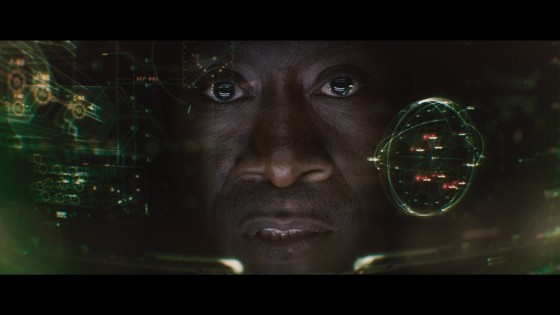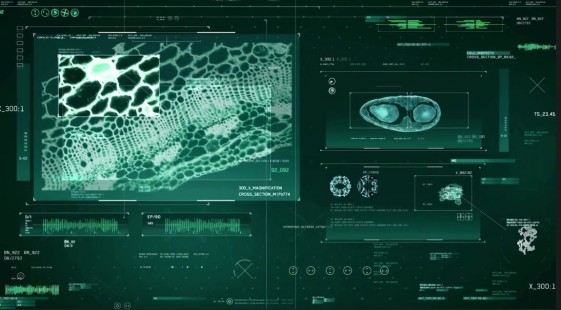Fictional user interface designs enhance realism and visually explain technically sophisticated story elements.
In the blockbuster movie Avengers: Age of Ultron (now in theaters) there are several crucial plot points not centered on dialog or action, but on the appearance of visual elements than can only be created by computer graphics. Two studios separated by thousands of miles were part of the cooperative team to create several of these elements, using Maxon Cinema 4D as their common toolset.

Cantina Creative of Los Angeles created images depicting a redesigned head-up display systems (HUDS) for the Iron Man suit. “As Tony Stark continues to evolve, so must his toys,” says Cantina’s Alan Torres, VFX Supervisor. “Cinema 4D helped us conceptualize, develop and ultimately solve the creation of several challenging new assets to tell the story the way we intended and create elaborate, 3D photoreal and dimensional environments in the HUDS so that Stark can maneuver in a truly interactive manner.”
The technical evolution in the HUD designs in Age of Ultron required Cantina to introduce new creative techniques and approaches demanding a heightened visual sense of space and lighting within all four of the new HUDS, namely the Mark 42, Mark 43, Mark 44 and Mark 45 armored suits. Cantina had created the HUDS for previous movies in the series; for Age of Ultron Cantina was asked to push the photographic quality of previous work to another level.
“A film project of this magnitude makes the creative process extremely fun and necessitates that our tools provide us with maximum flexibility so that we can stay focused, conceptualize new designs and push the envelope on existing material,” says Stephen Lawes, Creative Director, Cantina Creative. In a key point-of-view sequence for the Mark 45 where Stark scans a church key that runs through the rising section of earth, the view needed to transition from a live action plate to a CG schematic. “Using the camera and tracking data in Cinema 4D allowed us to import the church key model [supplied by Industrial Light and Magic] and after developing the schematic look of the key we were intuitively able to animate and then render passes into [Adobe] After Effects for compositing.”
Territory Studio of London worked with the movie’s art department to create a specific visual language for continuity. Territory designed 200 screens and 80 minutes of unique animations, across 11 sets, to create new visual identities and user interface designs for the technology seen in Avengers Tower, including Stark’s lab, Banner’s research lab, the Quinjet aircraft as well as the fortress of Baron Von Strucker and Dr. Cho’s advanced medical lab.

To achieve a fresh level of authenticity in elements such as 3D holograms and computer screen diagnostics, Territory researched details from the fields of military, robotics and avionics technology. “We approach our 3D work from a design perspective with the intention that our screen graphics will serve as a hero piece of content, a story specific element,” said David Sheldon-Hicks, creative director at Territory.
Territory drew upon various toolsets within Cinema 4D including Thinking Particles, Mograph, and Sketch and Toon for quick render passes, mesh organization, and for creative experimentation. “For the Leviathan screens, created for the Fortress set, we took a highly detailed CGI model received from one of the main vendors to organize the mesh into manageable chunks and to experiment with different setups,” says Peter Eszenyi, Head of 3D, Territory Studios. “Cinema 4D gave us the flexibility to explore using the mesh as an emitter as well as placing several other emitters around it. For other passes we used the mesh as a collider object, and of course we did quite a few different setups with turbulences, wind, surface modifiers—the whole works. In parallel we also used the Sketch and Toon module to experiment with different contour settings, lights and shadows and also played around after rendering the passes with shadows, ambient occlusion, tessellation methods, and projection so we could start producing the different screens. Some of the final results can be seen in a show reel created by Territory Studio.





